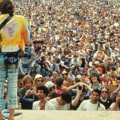Popular culture, mass or popular culture, high culture and low culture. Critics often see what they call “mass culture” as a simplistic and very easy to see formula (which has the effect of appeasing people by preventing them from engaging with more complex forms of high culture or more critical content). Rather, a myriad of products of popular culture keep people happy and stupid, like the king of modern “opium of the masses”. You know it when you access the Internet, listen to music, watch television, read comics, play with apps or go to the movies, to a concert or to a show, or even buy some popular enamel pins.
Popular culture refers to cultural products manufactured by businessmen and media companies in modern capitalist societies that are produced for mass consumption, with the aim of reaching a wide audience, usually with the aim of making a profit. In this decade, a very popular novel entitled “The Life of Pi” was also published, which was later shot in a Hollywood film. As Brummett explains in The Rhetorical Dimensions of Popular Culture, pop culture involves those aspects of social life in which the public participates most actively. Therefore, many scholars attribute the beginning of the phenomenon of popular culture to the rise of the middle class caused by the Industrial Revolution.
In addition to these, there are many other popular events and things that happened and were introduced in the 1960s, including science and technology, sports, fashion, television, dance and news. Generally, when popular culture items are appropriated and marketed by popular culture, popular items gradually lose their original form. The quantifiable definition of culture has the problem that much of “high culture”, such as Jane Austen's television dramatisations, is also “popular”. Therefore, the products of popular culture are not organic like popular cultures; they do not arise from everyday interaction between ordinary people, but are produced by professionals with an instrumental purpose: to entertain and earn money.
Progressive rock became popular and saw different bands and solo artists create chaos through this genre. During this decade, there was a lot of news and gossip about Hollywood, and American Idol was also very popular. Research tells us that people use popular culture to learn about other cultures, to reaffirm their own cultural identities and reinforce stereotypes.


